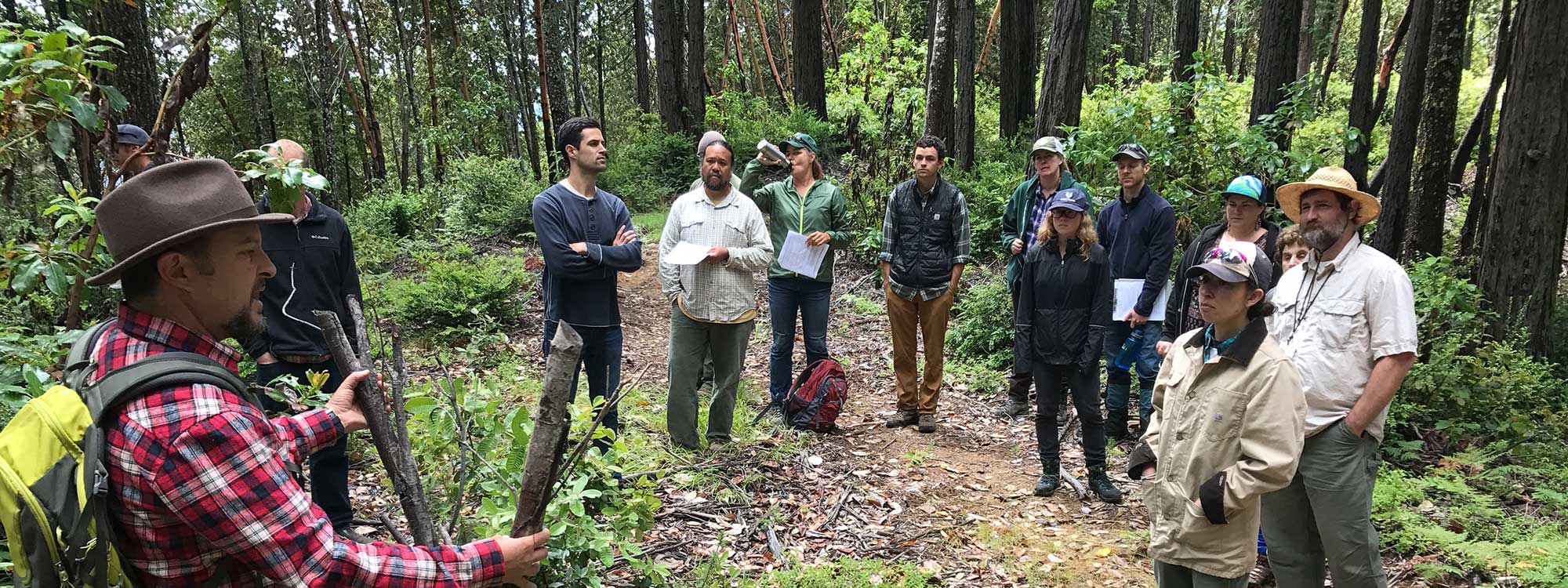Half of Sonoma County’s land is covered with forests: 522,000 acres of oak woodland, redwoods, Douglas-fir, manzanita, madrone, and more. Greenbelt Alliance was a co-sponsor of the North Coast Forest Conservation Conference where we joined with foresters, tribes, advocates, and landowners to learn and partner on ways we can protect the forested lands that are critical to the Bay Area’s greenbelt. Healthy forests are essential for clean air and water, wildlife habitat, wildfire protection, saving salmon runs and climate resiliency.
The conference was convened by the Sonoma County Forest Conservation Working Group and Sonoma Land Trust. Our board member Dee Swanhuyser was a key organizer and was joined by fellow board member Tom Brickley, and myself for the three-day event. “It was fantastic,” said Tom, who was there to learn more about sustainable forestry.
About 200 individuals and 86 different organizations engaged on a range of topics, including local conservation successes, forest stewardship, the Kashia Band of Pomo Indians perspective on the importance of forest as a place to gather, and a forest policymaker’s view on climate and carbon impacts to forests. Most of the presentations on these topics are available to download (free) here.
One of my favorite memories from the conference is from ethnobotanist M. Kat Anderson, author of Tending the Wild, who moved many of us with her explanation of how Native American elders described their traditional ways of tending oak trees. Nowadays, oak trees are harvested more sporadically, yielding less acorn production and causing the trees to be less healthy overall. Because of this, the Native Americans say that “the oak trees miss us” and their ways of harvesting the trees because their traditional ways of knocking acorns down, tending the trees, and controlled burning resulted in abundant acorn harvests.
On the final day, forest stewards led us into the woods with stories of restoration where cutting-edge conservation and forestry is underway at Jenner Headlands, Pepperwood Preserve, Coast Ridge Community Forest, and Mill Creek Watershed and Bear Flat Forest.
I took the field trip to Jenner Headlands, a 5,630-acre preserve located along the Sonoma Coast that rises up 2,000 feet above the Russian River. The preserve officially opens to the public in late 2017. Upon arrival, an osprey cried overhead as we jumped out of the four-wheel drive trucks to view shaded fuel breaks where the forest had been carefully thinned to prevent catastrophic wildfire. Next, we entered drier, open lands crossed by streams where bright yellow seep monkeyflower still popped from the banks. Here, experts decommissioned 1.8 miles of roads and saved approximately 8,500 cubic yards of sediment from entering the coho and steelhead-bearing Sheephouse Creek. Then we drove deeper into the forest where stumps from logging more than 50 years ago are now populated with young redwoods. Along this western ridge we walked through a redwood stand marked for forest restoration activities that will help accelerate the forest’s return to its full glory, after which it will be left alone to be wild forever.
I hope this glimpse into my journey encourages you, a Bay Area resident or a visitor from afar, to join us in our efforts to protect these forests that sustain the life of so many creatures today and for generations to come. Start by taking a walk in the woods with us on one of our free, guided outings.
Update: public access to the Jenner Headlands on the Sonoma Coast is moving forward. We can’t wait to explore this magnificent area!





